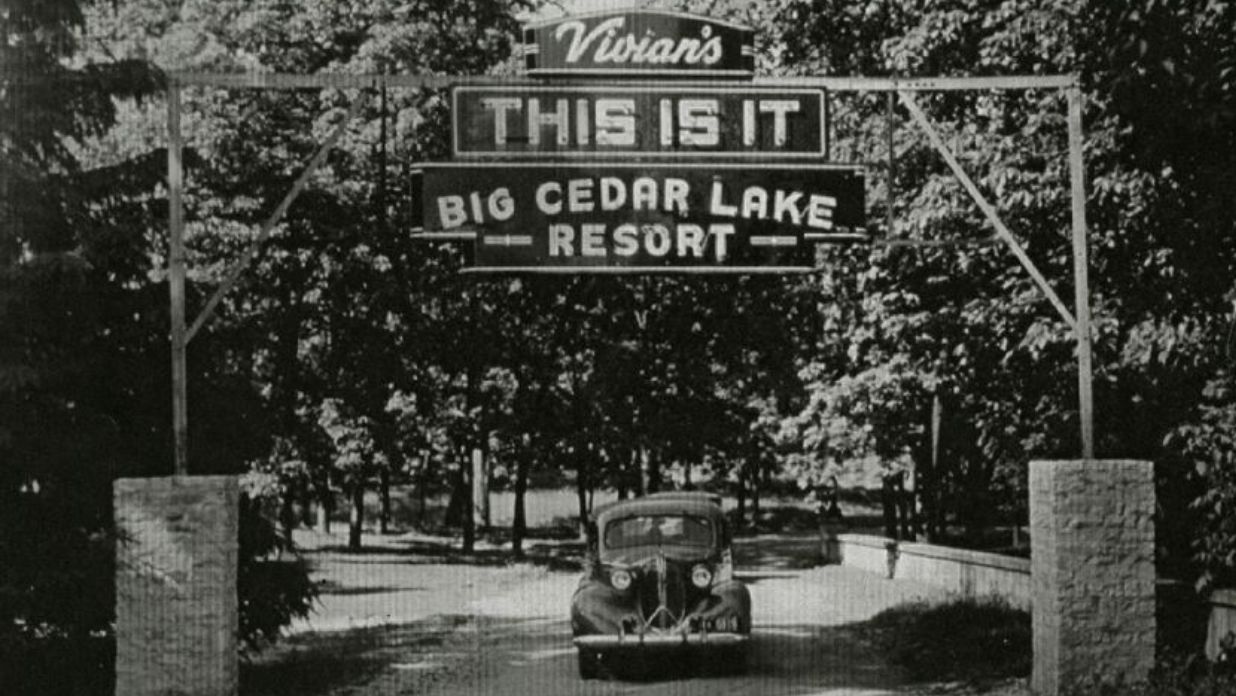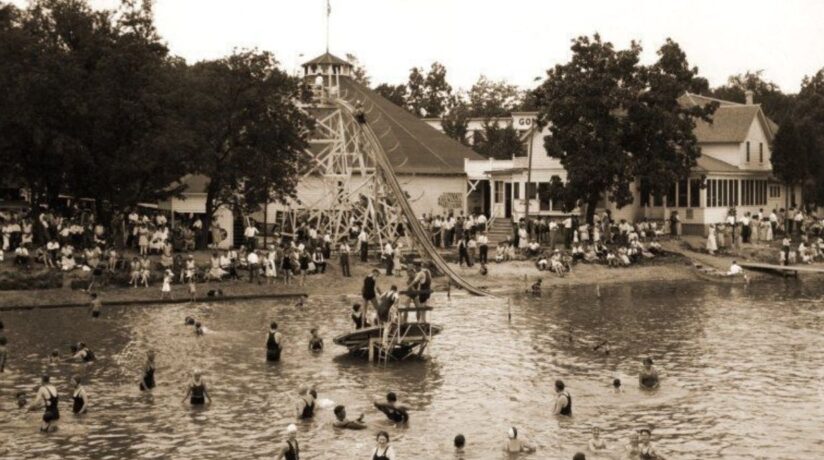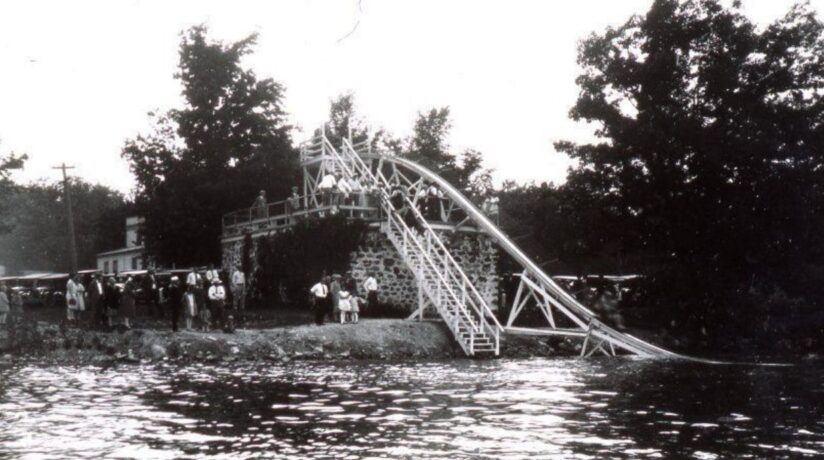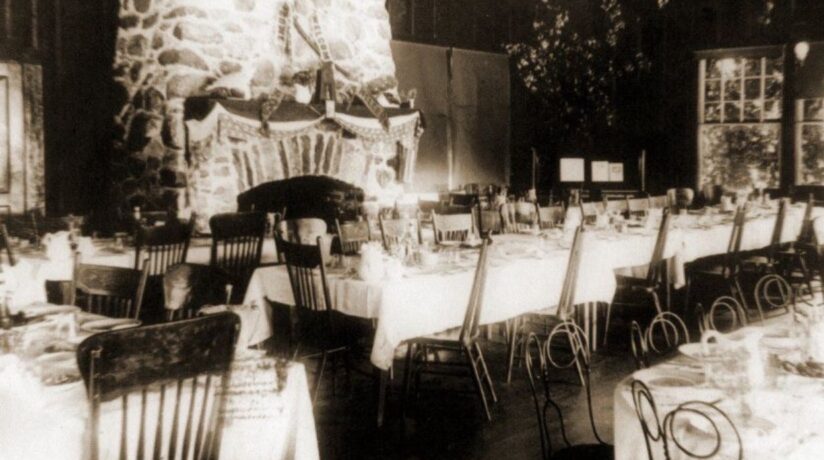Sitting at 4 miles long and covering 937 acres, Big Cedar Lake is the largest lake in Washington County. In the early to mid-1900s, midwesterners from near and far traveled to the lake to retreat from the heat and spend their summers on Big Cedar. Take a deep dive into 5 essential businesses that kept the lake magic afloat throughout history!
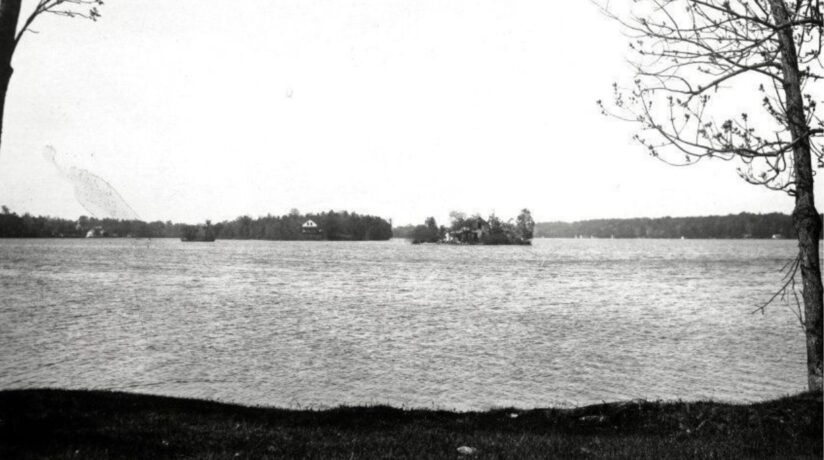

Left: Islands on BCL, 1918. Right: Sailers near Rosenheimer’s Resort, 1925
1. Livery Service
Imagine this…
It’s 1915, and your train from St. Louis has just dropped you, your family, and many of your belongings on the platform. It’s 85 degrees, sunny, and humid. You’re in Schleisingerville (Slinger), and there are miles of dirt road between you and your lake cottage escape. With no access to a car, how do you get to Big Cedar Lake?
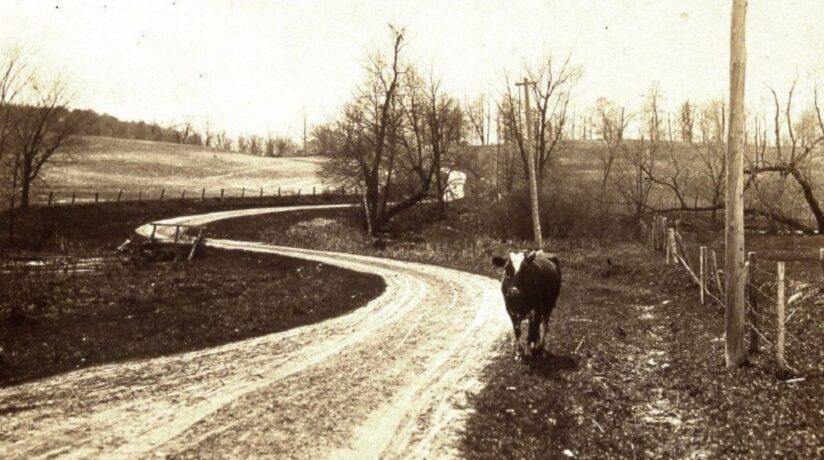
Above: Country Road near BCL, 1905.
Don’t fret! For just 50 cents, you can hire one of Kletti’s Livery men to load your luggage and take you to your lakeside destination via horse-drawn buggy! Kletti’s was a popular service that dominated the route between Schleisingersville and Big Cedar. If your train dropped you off at the West Bend Depot, Herman Bastian’s Livery Service would pick you up at the Washington House.
2. Resorts
Throughout the 20th century, Big Cedar Lake had dozens of resort businesses scattered on its shoreline. Like the film Dirty Dancing, but in Washington County!
Timmer’s Resort has been an integral part of Cedar Lake culture since its establishment in 1882. Located just south of an active dam that feeds Little Cedar Lake, Timmer’s was known over time for its rentable cabins and elegant dining space. The business remains on Big Cedar today.
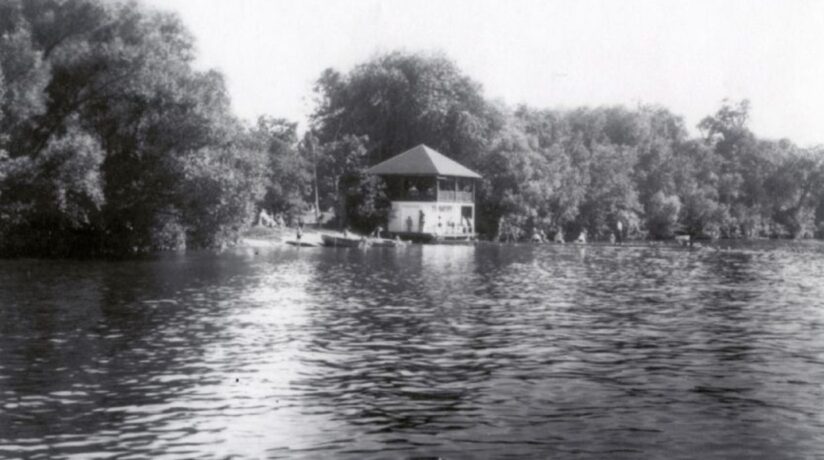

Left: Swimmers at Timmer’s Resort. Right: Full parking lot at Rosenheimer’s Resort, 1917
A notable competitor on the lakefront was Rosenheimer’s Resort, located across the water to the west. The Rosenheimer family purchased the “Cedar Lake Park Hotel” and transformed it into an iconic summer destination.
The Rosenheimers built a large circular dance hall in the 1920s, which was enjoyed widely by both resort guests and local clientele. The venue hosted many celebrity musicians in the 1930s and 1940s, including Guy Lombardo, Kay Kaiser, & Louis Armstrong.
Rosenheimer’s Resort was best known for its lovely picnic spot, complete with a beach and giant water slide!
Other notable resorts & their amenities:
Gonring’s Hotel & Resort – Aquatic playground & enormous round dance hall
Oak Lodge Resort – Previously home to BCL Yacht Club
Stegge’s Resort – Frontage boat landing with rowboats and canoes
3. Floating Photography
Skilled photographer Sam Levy and his nephews started “Floto,” a floating photo studio in the early 20th century. Levy and his nephew would dock the large watercraft, similar to a houseboat, just north of Rosenheimer’s Resort on the south end of the lake.
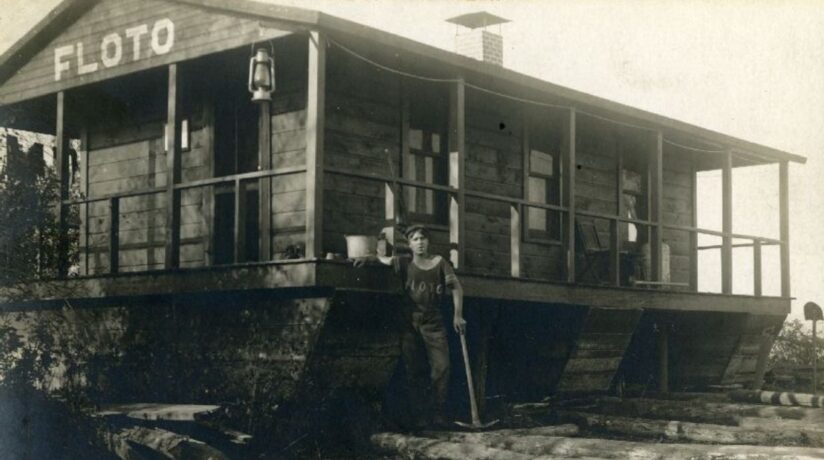
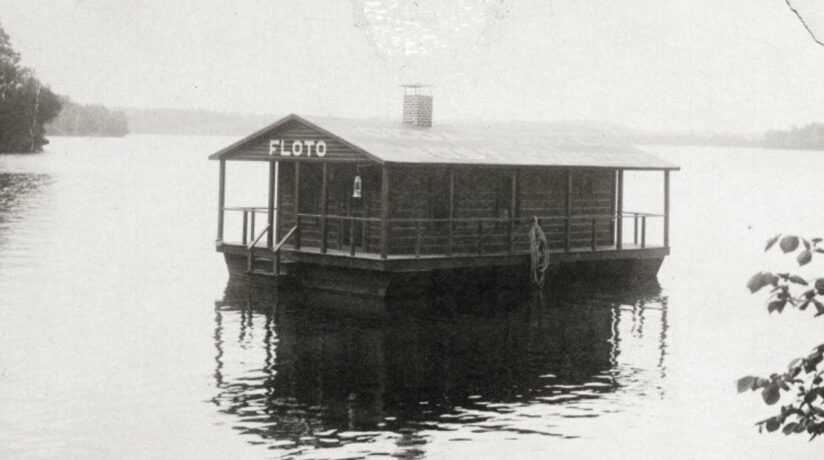
Penny-Postcards for Big Cedar Lake
Many of the photos Levy captured were used for penny-postcards, a popular commodity of the time that allowed guests to inexpensively share their whereabouts with friends and relatives.
4. Cruise Boat Service
Before 1920, it was expensive for vacationers to visit the lake, making it even more costly to own a watercraft. For less money, you could board a passenger boat to cruise the lake.
Picture a cruise boat service: You enter the passenger launch, hop aboard a boat, and enjoy a nice trip around the lake.
Most of these vessels were rowboats until steam and kerosene-powered boats were introduced.
Cedar lake’s passenger boats
“Isy” was the first kerosene-powered boat available for rides, and “Elsa” was the first steamboat. Rosenheimer’s eventually had its own steam-powered boat and charged 25 cents per round trip. They called it the “Witch of the Waves.”
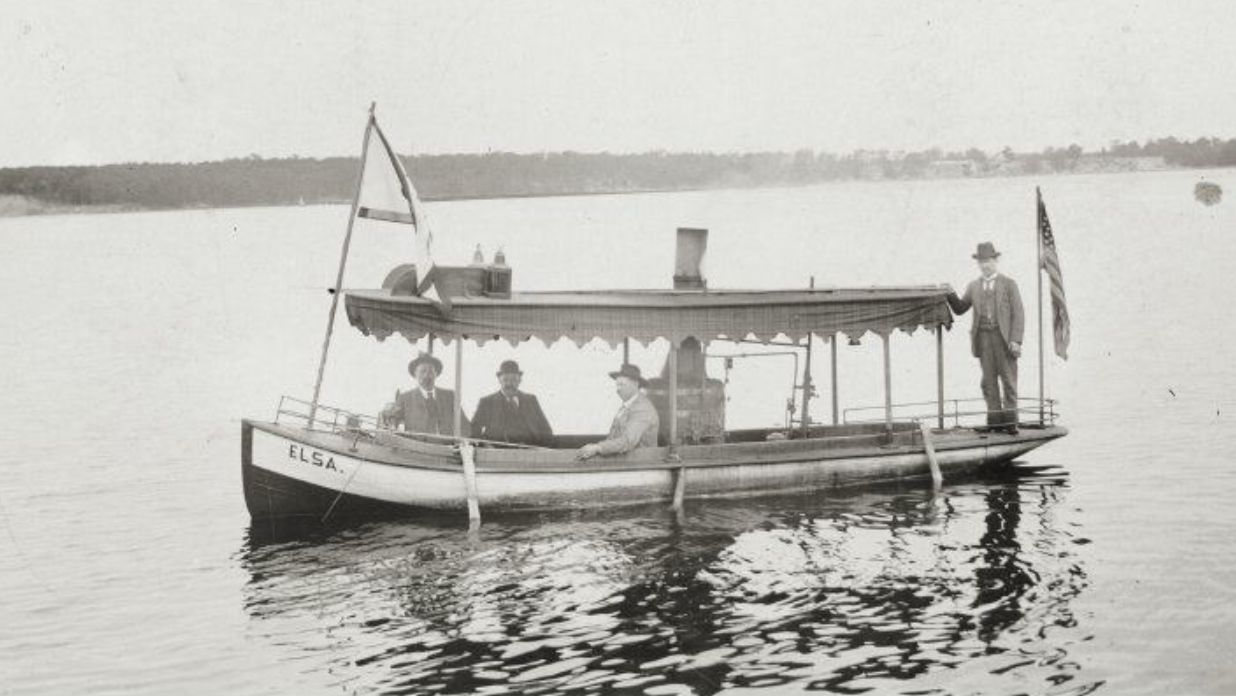

5. Ice Harvesting
As hard as it is to imagine, getting a bag of ice from Kwik Trip to fill your cooler wasn’t always an option! During the 1900s, harvesting ice from freshwater sources was a notable enterprise. Big Cedar Lake’s ice was crystal clear from the natural springs and depth at the south end of the lake.
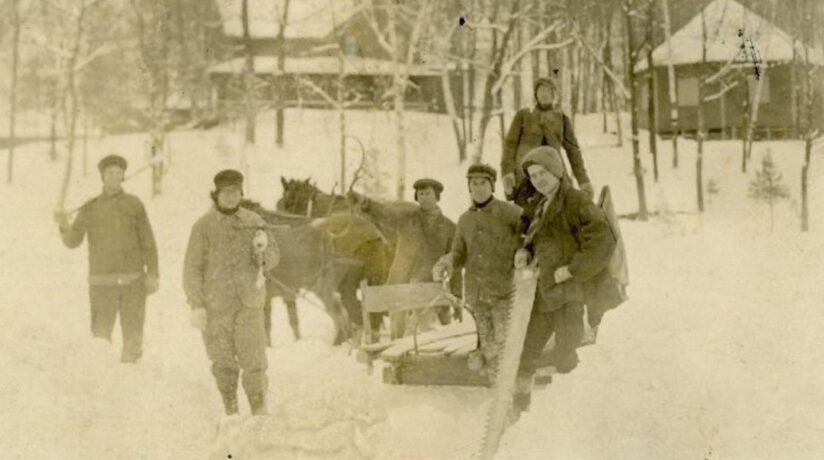
Above: Ice harvesting at Hacker’s Grove- 1930s
Keeping it cool (and profitable)- all summer long!
Resorts harvested ice in the winter – or bought it from someone who did – and stored it in “ice houses” to last through the vacation season. Ice houses were shed-like buildings with thick stone walls and a layer of straw for insulation. Ice houses allowed resorts to keep food fresh and make refreshing cocktails all summer long.
Local railroad investors also took advantage of harvesting Big Cedar Lake ice, transporting ice to major cities across the Midwest.

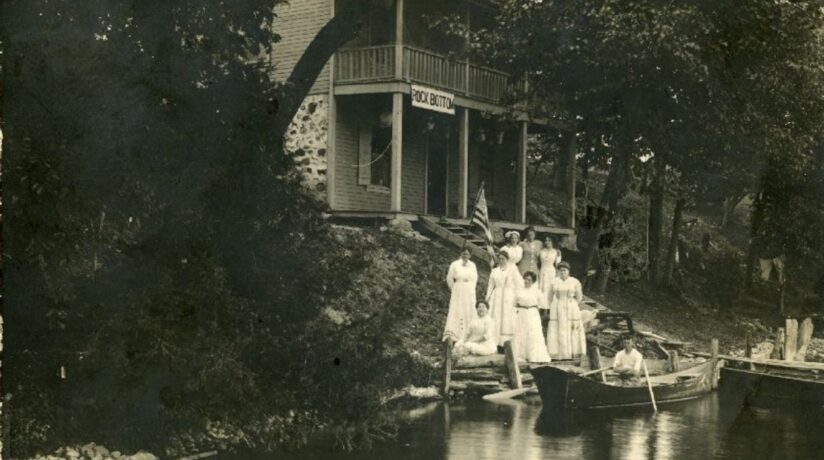

Parting Words:
Though it’s still a beautiful and elegant summer spot, Big Cedar Lake has many charming elements to its past. Without the businesses that drove the glory of before, there wouldn’t be appreciation for all the lake has to offer today.
Preserving the past, for tomorrow
Community support keeps Washington County’s stories alive. Make a difference in preserving our community’s historic places and cultural heritage today, by becoming a member.
